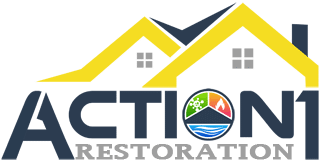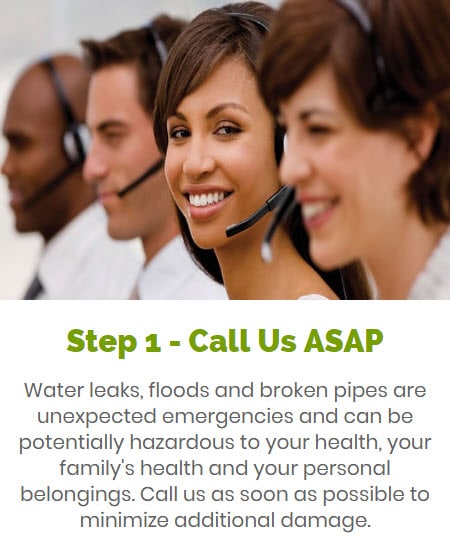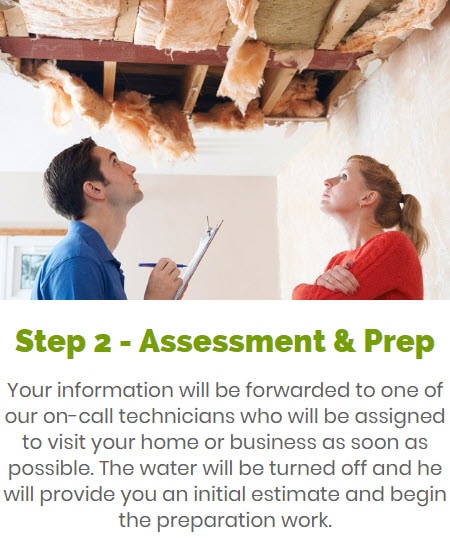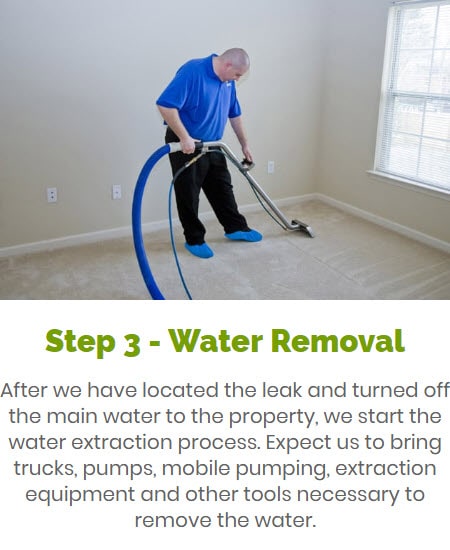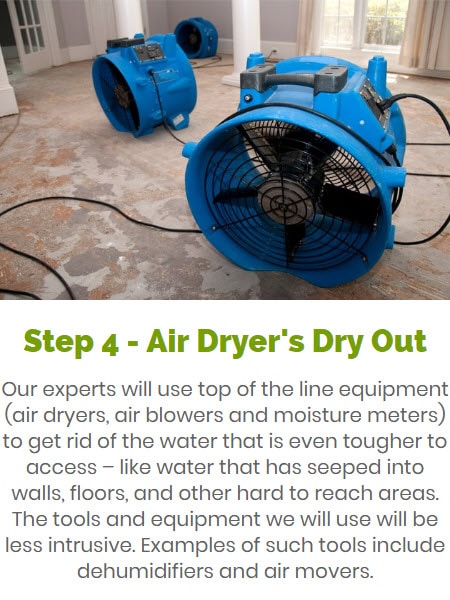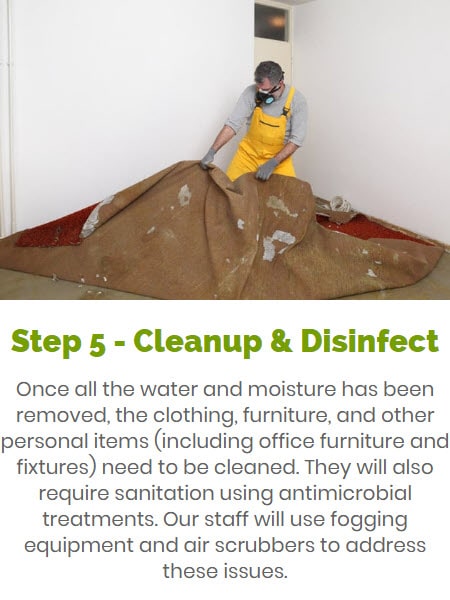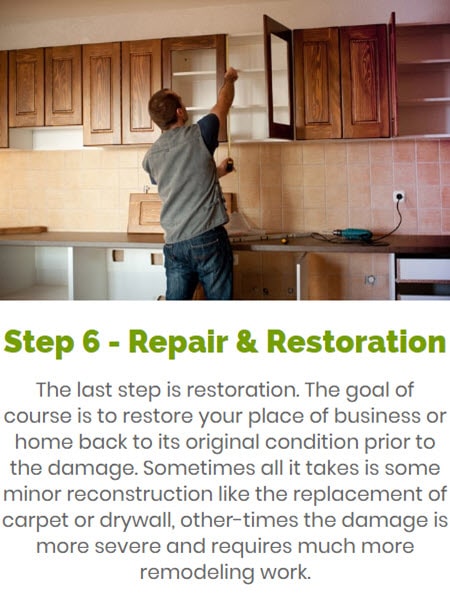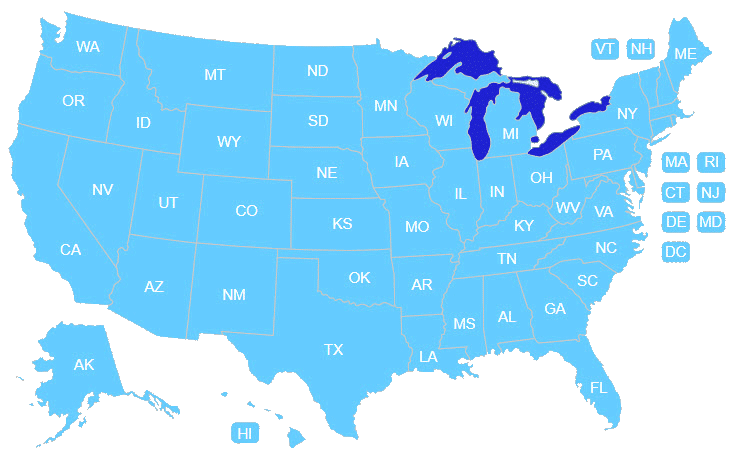Water Damage Restoration and Cleanup Services
Call Us Today- Home
- /
- Water Damage
If you are experiencing water damage caused by appliance malfunctions, frozen pipes, broken pipes, failure of a sump pump, foundation leaks, heavy rains or a power failure, call Action 1 Restoration today. Our experienced team of professionals is available to respond to any emergency big or small, any time of the day or night. We aim to minimize your damages in the fastest way possible.
All our technicians are highly qualified and trained in handling areas such as flooded basements, building materials, carpeting, hardwood floors, ceilings, or drywall. We specialize in professional restorations and can assist you in minimizing water damages and we prevent the spreading of mold growth, odors, and airborne bacteria. Find one of our locations near you for fast water or flood damage repair services.
Why Choose Action 1 Restoration Services?
Whenever your home is under the threat of water damage, caused by either leaks or flooding, our teams have the necessary expertise to mitigate or prevent the types of devastating effects caused by water damage. We aim to assist you in preserving your home and provide innovative and effective techniques in restoration. We have the skills and the equipment to handle challenging situations regarding water damage. In addition, you can call us twenty-four hours a day for a speedy response to your water damage emergency. Our repair services will include drying, disinfecting, and deodorizing your damaged and flooded areas.
Some of the equipment we use will include the following:
- Hygrometers, moisture meters, and various other meters to determine the extent of your moisture saturation
- Gas-powered and submersible pumps for continued water removal pumping
- Portable and truck-mounted units used for efficient methods of water removal
Fast Response Services
We work with some of the best local contractors in your area to provide fast and emergency response services to help restore your home or business. Having a fast response team and arriving at your property promptly after you call us, enables us to prevent further damage, eliminate any potential threats, and lower the cost of water removal, dry-out, and repairs.
Here When You Need Us
Water and flood damage to your home or business is always an unexpected disaster, it is important to know you have a team like Action 1 Restoration and our partnered contractors at your disposal to assist you during this disaster. In some areas, our team of experts provides us a 30-minute response time after the initial phone call. Rest assured, we have you covered, day or night, we’ll be there.
Experience Matters
When it comes to water damage restoration emergencies, we are specialists and understand the importance of emergency services and fast response times. We use state-of-the-art equipment to help with extracting the water and drying out your home or business. We also use special tools to help test the moisture in the air to help prevent mold growth.
Learn more about the common causes of a water loss
What you can do while you wait

Secure Your Family
Any standing water or sewer water can be dangerous for your family and pets. You need to get your family and pets away from the standing water ASAP.
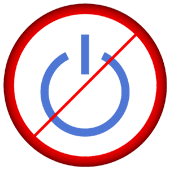
Turn Off the Power
We all know water and electricity don’t mix. If the water is rising & getting close to electrical outlets, the power needs to be shut off to prevent shocks and fires.
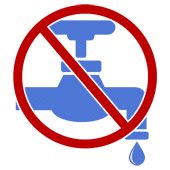
Turn Off the Water
If the water is clean water and coming from a burst or broken pipe, you need to stop the flow of water into your home to help prevent additional damage.

Move Personal Items
If it is safe, the electricity and water is turned off, you can try to move some of your personal valuable items to prevent any additional damage to them.
Remove the Water and Dry Out
- Once our specialists can investigate and survey every area of your property to determine the exact extent of damage present
- Once you have approved the quote and agreed to the water extraction services we provide, we will quickly get to work in extracting every trace of water from your home
Any water left to stand can lead to bacteria, mildew, and mold growth. Our team is trained to prevent any secondary damage as we use different drying techniques to efficiently eliminate all signs of excess water
Structural Drying
In previous years, water damage would usually mean you would have to dispose of and remove your belongings from your home after a disaster such as water damage. This would mean removing parts of the wall to locate structural damage and moisture pockets. This process is related to high costs and time-consuming methods.
Today, we have far better processes and solutions to dry out your home. The processes we use aim to effectively and quickly dry your walls and structures. Our local teams use this method of rapid drying as the most effective method to date in the successful elimination of water and moisture in your exterior and internal structures.
Sewage Cleanup
Once our highly trained team has extracted all traces of sewage and water our restoration process will include the following:
- Removal of any damaged items for restoration
- Drying and de-humidification
- Odor removal
- Rebuild, repair and restore your home
Every drying and mitigation technique is carried out by our trained and qualified technicians. We have managed to help thousands of homes each year in restoration and helping families get back to their lives as quickly as possible. You can also check out the Action 1 Restoration Blog for additional prevention tips and what to do after you have had water damage strike in your home or business.
Reasons Why Customers
Choose Our Experienced Team

Upfront pricing

Highly rated team

Decades of experience

Skilled and trained technicians

24/7 emergency services

Eco-Friendly & saving solutions

1000's of satisfied customers

Certified and trained techs

We work with your insurance company

